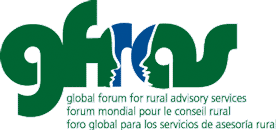 Advocacy is the process of supporting a cause, such as fostering a RAS-friendly policy environment. This category thus contains resources that relate to advocacy for RAS and provide strategies on how to best engage in policy processes. It looks at how to identify topics that need to be strengthened in policies, how to engage in multi-stakeholder processes for a particular cause, and how topics can be brought to the attention of policy makers. It discusses how to adapt your strategy to your very specific context and contains information on how to communicate you cause.
Advocacy is the process of supporting a cause, such as fostering a RAS-friendly policy environment. This category thus contains resources that relate to advocacy for RAS and provide strategies on how to best engage in policy processes. It looks at how to identify topics that need to be strengthened in policies, how to engage in multi-stakeholder processes for a particular cause, and how topics can be brought to the attention of policy makers. It discusses how to adapt your strategy to your very specific context and contains information on how to communicate you cause.
Partnerships and Involved Actors (2)
Who are the current key actors in the policy and RAS environment? Who might have similar goals, what partnerships can be forged, what actors should be brought on board?
Type: Case study, experience, example
This document describes the Federation of Free Farmers Cooperatives efforts to influence the formulation of proper RAS policies and their translation into effective programs and services that benefit small-scale producers in the Philippines.
Type: Case study, experience, example
“How can Rural Advisory Services (RAS) reach millions of smallholder farmers in a poverty oriented, ecological, and financially sustainable way?” This was the starting question of a one-year learning process undertaken by the Swiss Agency for Development and Cooperation’s (SDC’s) Agriculture and Food Security Network. The learning process began in September 2014 with a review of project documents and selected key informant interviews pertaining to long-term SDC-financed rural advisory projects in Vietnam, Laos, Bangladesh, Nepal and Kyrgyzstan. Also considered were RAS systems in China and India, where development partners play a lesser role. The book’s reflections on 20 years of experiences in Asia articulates the lessons learned and provides recommendations on how RAS systems can best reach out to large numbers of agricultural women and men producers in a poverty-oriented, ecological and financially sustainable way.

